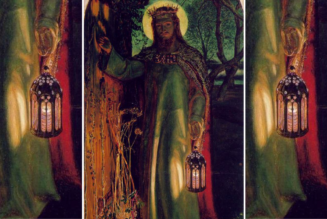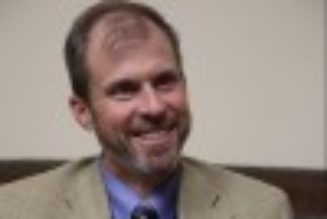:focal(488x325:489x326)/https://tf-cmsv2-smithsonianmag-media.s3.amazonaws.com/filer_public/0e/19/0e199e3b-402a-401d-9e56-360e3ec3fcb6/birdoswald-newly-discovered-bathhouse.jpeg)
Hadrian’s Wall in northern England is a popular tourist spot for those interested in British history. This year, visitors will get the chance to see the Roman bathhouse at Birdoswald Roman Fort before it is reburied by archaeologists.
Birdoswald was a Roman military base on Hadrian’s Wall, which was built in the 120s C.E., during the reign of Emperor Hadrian. At the time of its construction, it occupied the northernmost reaches of the Roman Empire, stretching some 73 miles from east to west.
The bathhouse, which was discovered in 2021, is just outside of the Roman fort and is in an area known as an extramural settlement. These areas are thought to have housed a mixture of families of soldiers, civilians, traders and service providers. They commonly contained houses, communal spaces, workshops, taverns and other facilities you would find in a sprawling military town.
Two years after making the discovery, the excavating team has announced it will be reburying the bathhouse, which might seem odd to many. I’ve worked on several excavations on Hadrian’s Wall, and I’m the regional editor for reports on discoveries there. I can tell you that the bathhouse is not the first find to be buried again, and it won’t be the last.
Reburial is a common archaeological practice that happens once researchers have found and excavated as much as they had planned to. It will help preserve the site for future archaeologists who might have updated methods and can study the evidence better or ask new questions.
The final day of the 2023 season @ArchaeologyNCL & @HistoricEngland Birdoswald excavations! As with previous seasons, incredible discoveries have been made, and our students have had great experiences (educational, professional, & social). Always a pleasure to visit site! pic.twitter.com/TqFiNQInkv
— Dr Rob Collins, FSA (@duxBritanniarum) July 7, 2023
A destructive process
The excavation at Birdoswald aims to put the occupation of the military forts on Hadrian’s Wall into a wider perspective and provide a rare look at the lives of ordinary people living around the wall in Roman times.
The bathhouse is preserved in parts to a height of around 6.5 feet and contains a heated room known as a hypocaust. This is a system of water supply, which most likely led to a water heating system.
Parts of every excavation—for example, soil deposited within the bathhouse interior, a Roman floor or contents of a storage pit—are effectively being destroyed when archaeologists dig through them. Once something has been dug out, it cannot be excavated again.
For this reason, archaeologists must meticulously record the excavation, publish its results and preserve what’s been dug out and what remains in place—or as archaeologists say, using a Latin phrase, what remains “in situ.”
Because of the destructive nature of excavations, archaeologists rarely excavate whole buildings or sites. Instead, a careful excavation strategy is made to target the areas that are likely to yield the most useful information.
At Birdoswald, several areas outside the fort were targeted for excavation, including the bathhouse and the main road leading out of the fort. It’s common practice to only dig out half of the features, because a sample of recovered material is generally enough to get an idea of the function of what’s being excavated. Also, much of the physical labor of fieldwork is manual, so it takes a lot of time.
/https://tf-cmsv2-smithsonianmag-media.s3.amazonaws.com/filer_public/2c/82/2c826e73-721d-4b7f-980c-aaeb0738308e/1280px-birdoswald_eastern_wall.jpeg)
Unless a site is threatened with destruction due to development work or erosion, the dig team leaves sites with much of the archaeology pretty much intact. This allows future archaeologists to revisit the site and gain new information from the parts of it that remain undisturbed.
At Birdoswald, archaeologists return to the same spot several years in a row, each time digging a little deeper than before. In the same way, they excavate only a portion of the bathhouse each year.
To bury or not to bury?
Excavations stop at the point when all the planned trenches are completed and when specific research questions, usually about the use and dating of a site, have been answered. At Birdoswald, these questions include the use, significance and role of the settlement outside the fort.
The archaeologists at the bathhouse are coming to this point and have decided to cover it back up (known as backfilling) once their work is over.
The most widely reported risk to archaeological heritage is the lack of maintenance and conservation of in situ excavated remains. So, in many countries, including the United Kingdom, where it is standard practice, backfilling of excavated sites is a condition of excavation permits.
If left open, subsurface deposits can deteriorate quickly when exposed to the new conditions above the ground, including changes in temperature, sun exposure and fluctuating humidity levels. Physical damage will also occur, including cracks in stone structures, weathering, later crumbling of parts of the structures, and the erosion and slumping of the edges of the trenches and cuts made by archaeologists. Human factors pose dangers, too, including looting, metal detecting, vandalism and curious visitors wanting to step into excavations.
Alongside @UniofNewcastle, we have started work on a new season of excavations at @EnglishHeritage‘s Roman fort of Birdoswald!
New insights into daily life on the frontier are emerging.
Find out more about guided tours https://t.co/XzLUCJuFjN@ArchaeologyNCL pic.twitter.com/MnhiRgR94I
— Historic England (@HistoricEngland) June 16, 2023
Before backfilling the bathhouse, the team will analyze different materials, assessing their ability to resist conditions such as high humidity and biological damage, including burrowing animals and plant roots. The mounds of soil that had been dug out will be put back in the order in which they were excavated. This ensures vegetation can return to the site the following summer.
The bathhouse will likely be covered with a layer of clean sand or a plastic sheet to let future archaeologists know when they might be approaching valuable archaeology in situ. Sometimes coins with current dates are added to the fill material to enable identification of the trenches.
The site will be reburied in the next few weeks. But if you miss your chance to see it, be sure to check out a fully reconstructed bathhouse that shows what the Birdoswald bathhouse might have looked like at the nearby fort at Wallsend.
This article is republished from the Conversation under a Creative Commons license. Read the original article.
Anna Walas is an archaeologist specializing in the Roman army of the imperial period. She is an honorary research fellow at the University of Nottingham in England.
Recommended Videos







